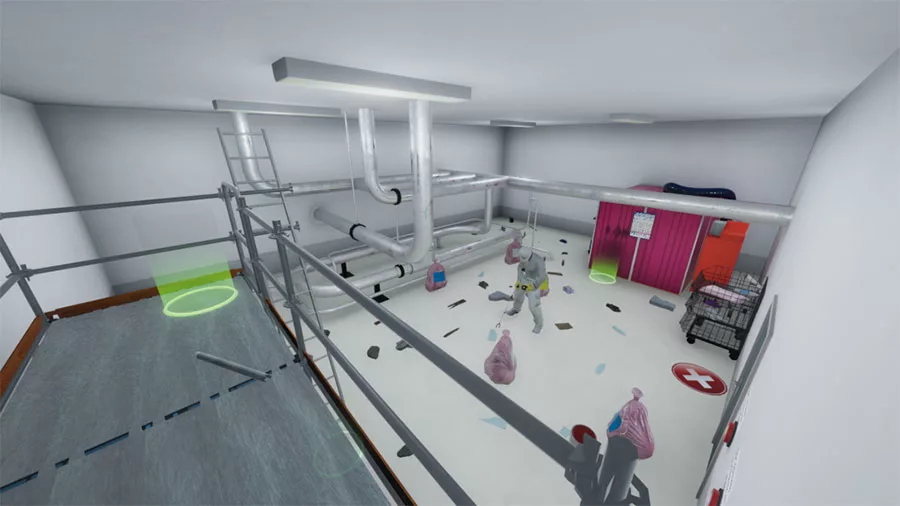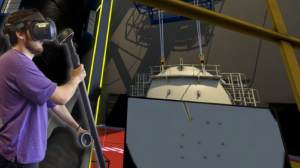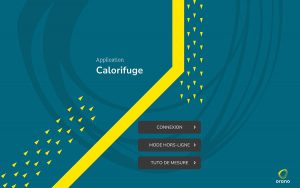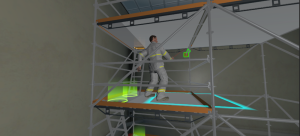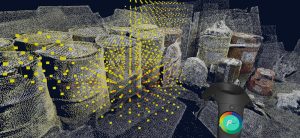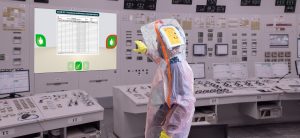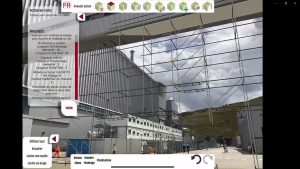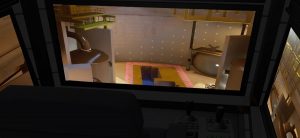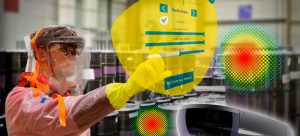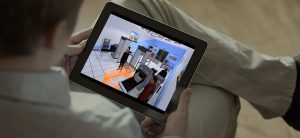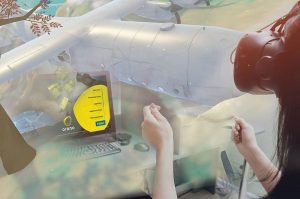Orano DS is responsible for waste management at numerous nuclear sites, particularly at the following three sites: Cadarache, La Hague, and Tricastin. The company aimed to develop VR training modules dedicated to waste management, with the objective of training operators in performing technical tasks.
This is how Audace designed a multi-site application with scenarios specific to each nuclear site. This application allows for the training and awareness of individuals in nuclear waste management and sorting. Ultimately, operators will be able to master the entire activity within ORANO and EDF sites.
Digital training content
The training consists of several scenarios, each corresponding to an activity present on a nuclear site.
Some examples of existing exercises include:
- Radiological characterization: operating the contamination monitors, connecting the probes, functionality check with a source…
- Packaging and sorting of waste inside and outside the containment area: waste packaging, performing a radiological characterization on the waste…
- Filling a drum by docking: packaging a list of waste items
- Discharge of waste through a bag ring: checking for contamination of the sleeve, inspecting impurities, welding…
- Verification of packages before evacuation: identification, packaging, labeling…
- …
Device
The environments of the three Orano nuclear sites are modeled in VR with their specific features. The modules are then integrated, taking their characteristics into account.
Regarding the modeled environment, the training activities take place within several facilities:
- Cold locker,
- Maintenance workshop
- Waste sorting station
These are designed by integrating radiological conditions distributed via interpolation from the hot spot. Finally, to make the experience more immersive, the overall graphics are as realistic as possible. Environments, handling, texture and lighting effects have been modeled from site photos to be as close to reality as possible.
Gameplay
Within each scenario, the learner has freedom of movement. They can navigate throughout the environment of the rooms and airlocks, access scaffolding, and use various equipment. They can also select waste bags and personal protective equipment (PPE) according to radiological and safety risks.
The challenge for the learner is to complete their tasks safely.
- Example 1: Check the scaffold’s compliance by verifying the reception sign.
- Example 2: Measure the dose rate using a “Dolphy” radiometer on each waste or on the waste bags.
The trainer can trigger incidents during the simulation to test the learner’s response: dose alarm, lack of oxygen, depressurization system failure, presence of metals in the waste bags.
Pedagogical objectives
Under the supervision of a trainer, the main objectives of this application are to train operators in the various aspects of waste sorting in a nuclear environment in order to learn:
- To use various dose rate measurement devices,
- To collect and handle different types of waste present in nuclear environments
- To label certain nuclear waste storage containers
In each scenario, the learner must complete specific missions. Throughout the session, their objectives are recorded and summarized in a PDF file detailing their progress. Therefore, in this application, there is no formal evaluation phase; success is based on the learner’s ability to achieve the objectives.
The ultimate goal is for the learner to be able to perform the activity in real conditions while adhering to the instructions of the nuclear sites.
Pedagogy of the "Waste Sorting" Application
The VR training allows for better training of Orano employees:
- On one hand, employees can see and interact with nuclear environment concepts in a realistic virtual setting, which can help them better understand and retain the information taught.
- On the other hand, they can make mistakes in the virtual environment without real-world consequences, which can help them learn more quickly and safely.
Finally, there is no need to prepare a room with waste to sort or to bring in machines for the training. This is a safe and educational alternative for training employees while saving on financial, human, and logistical resources (no need to move machines or prepare a training area).
